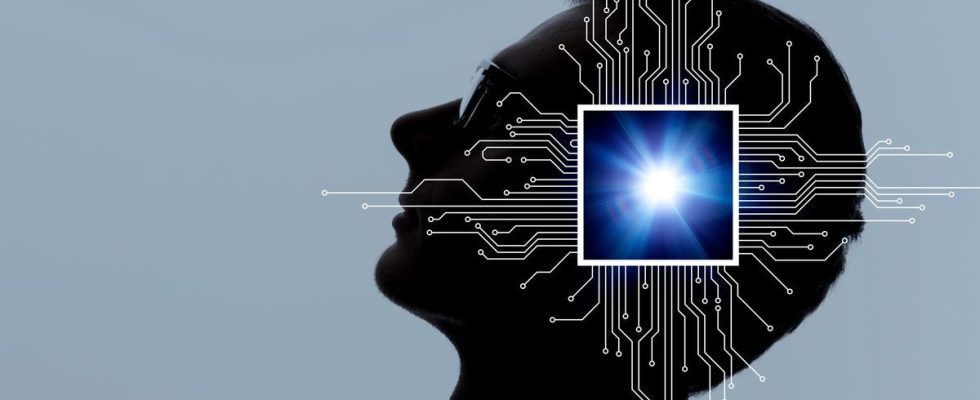Published on
Updated
Reading 4 mins.
Transcranial magnetic stimulation, rTMS, is a method for treating patients with depression. It has the advantage of causing very few side effects. More and more practitioners around the world are learning about this innovative therapy, like Dr. Alexis Bourla. Psychiatrist, specialist in neurostimulation and resistant depression, at the Saint-Antoine hospital in Paris, he explains to us rTMS and its effectiveness in treating depression.
It is a therapeutic technique intended to treat a number of neuropsychiatric illnesses, including resistant depression, but also neuropathic pain. It is a technique of non-invasive stimulation of the cerebral cortex which works using a coil affixed to the patient’s head and which, thanks to a magnetic field generated by this coil, causes excitation, or on the contrary an inhibition, of the cerebral area opposite.
The magnetic pulses will stimulate different areas of the brain depending on the pathology concerned. The stimulation will lead to the depolarization of neurons at different speeds and help the area in question to better “connect” to other brain areas. The brain is given the power to “calm” and inhibit other areas involved in the pathology thanks to the stimulated neural circuits. rTMS offers a new window on the brain.
What pathologies does rTMS treat?
The two indications approved in the international medical literature are resistant depression and neuropathic pain. rTMS is treated for depression in the majority of developed countries, such as France, USA, Germany, Canada, UK and Australia.
It is also effective in treating other pathologies such as OCD, tobacco addiction (recently authorized in the United States), post-traumatic stress syndrome, anxiety disorders, but also schizophrenia. In neurology, many studies show the interest of the technique for other types of pain, such as fibromyalgia. Trials are underway for Parkinson’s disease and Alzheimer’s disease.
rTMS will restore the functioning of the brain to “normal”. The prefrontal cortex is the “conductor” of the brain. The brain areas are connected to each other, and when the brain is functioning well, this area of the cortex will activate or inhibit the other areas with the help of neuron projection. In the case of depression, the limbic system (an area deep in the brain) will malfunction, generating anxiety, sadness and other symptoms.
When we are well, we are able to inhibit our own negative emotions without even realizing it. Conversely, in depression, the prefrontal cortex is no longer capable of it. rTMS will help release serotonin, dopamine and GABA into the cerebral circulation at the level of the cerebral areas concerned, but even remotely. The brain regains its ability to control itself and manage emotions. The brain relearns to be better.
Can we measure the effectiveness of rTMS on patients with depression?
Studies show that about 60% of people improve. At the end of the cure, 30% are in remission and 30% in “response”. We speak of “response” when the patient’s symptoms are halved. If the patient has responded well to the treatment, his symptoms gradually lessen, the sadness is lessened, concentration improves, and he regains sleep. Treatment most often has gradual effects, but some patients describe more rapid effects. It is difficult to give exact figures on the number of people in France who use rTMS. It is estimated that more than 100 centers practice it, mainly psychiatric hospitals, university hospitals, private clinics, non-university hospitals and private practices.
Is rTMS suitable for everyone?
In France, rTMS is only accessible to adult patients because the medical profession remains reluctant to perform it on minors. But in Spain, it is used to treat children with autism spectrum disorder. In England, they use it to treat pregnant women who suffer from depression because it is a treatment that has fewer potential side effects than medication. The only formal contraindication is the case where patients have intracranial metal implants, such as people with a pacemaker. Overall, rTMS is very well tolerated. But it can still happen that headaches, as well as fatigue appear during the cure. There is a risk of an epileptic seizure, which is extremely rare, however.
How long does a course of rTMS last?
A cure of rTMS lasts six weeks, with generally one session per day. For depression, thirty sessions are recommended (so six weeks of treatment), and it is estimated that the effects are felt after about fifteen sessions. Some patients called “late responders” only feel the effects between the twentieth and thirtieth session, or even after the end of the treatment. A session generally lasts between twenty and thirty minutes, but certain so-called “Theta-Burst” protocols allow for shorter sessions (between three and ten minutes). In other indications, the cure may be shorter (ten days), for example for pain. There is also a very intensive five-day protocol, called the Stanford protocol, which is beginning to be offered in a few very specialized centers in France.
